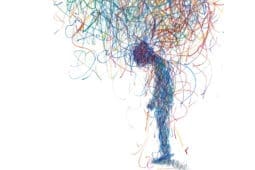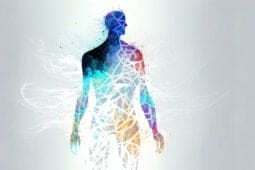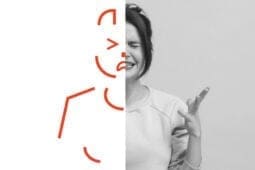Clinical Skills & Experience
Defusing Couples Conflicts with the Enneagram
A New Take on a Centuries-Old ToolBy making sense of one another’s temperamental styles through an Enneagram lens, therapists can help partners understand their differences in a new way. Read more
The Orgasm Gap
7 Strategies to Help Women Experience Sexual PleasureMany women struggle with orgasm in heterosexual relationships. Here are seven strategies therapists can use to empower female clients to experience more... Read more
The Therapist Who Sees Therapists
Working with the Trickiest ClientsIt’s no secret: therapists make tricky clients—but there are specific ways we can help therapist-clients feel seen and cared for. Read more
Is Therapy Slipping into Pseudoscience?
Recognizing the Warning SignsAre we doing enough as clinicians—and as a field—to ensure we’re using truly science-based treatments? Read more
Unlearning Behaviorism
The Mindshift of PDA-Informed CareTried-and-true behavioral strategies have been failing spectacularly in households with Pathologically Demand Avoidant children. Helping PDA families feel safe... Read more
What is Faceblindness?
When Brain Architecture Impacts TherapyTherapists tend to assume all their clients can visualize safe places and past experiences. But some can’t! Read more
Inside The PDA Safe Circle
Supporting Vulnerable Nervous Systems in Chronic DistressVulnerable nervous systems that are in chronic distress require a unique approach to understanding and creating a felt sense of safety. Read more
Healing a Lifetime of Neurodivergent Trauma
Accommodation, Validation, and Autistic AttunementFor many Autistic people, the trauma they carry is a result of society treating them like broken neurotypicals. Neuro-affirming care begins with providing... Read more
What Not to Do in Neuro-Affirming Intakes
And What You Should Always DoNeuro-affirming intakes need to begin with doing no harm. Read more
Autism and Disordered Eating
What You May Be Missing and MisdiagnosingThe overlap between autism and eating disorders is poorly understood, even by many eating disorder specialists. Read more
The PDA Lens
A New Vision for Supporting a Nervous System DisabilityWhat would you do if your active but chronically dysregulated four-year-old stopped speaking, eating, and moving, and everyone you turned to for... Read more
Neurodiverse Couples Therapy
The Truth about Relationships through a Neurospicy LensCouples therapy was designed for neurotypical people—yet we know that neurodivergence is everywhere. How can we better identify, help, and support... Read more
Today's Autism and Teens
Grappling with Identity, Belonging, and Self-AcceptanceWhen it comes to teens who’ve found belonging and understanding in the autism community, our job is more about validating than diagnosing. Read more
Forging a Multicultural Identity
How to Move from Isolation to FusionHow can we help our clients work through the inner torment of trying to occupy two cultural identities at once when they don’t fully feel they belong to... Read more
"I Want to Be a Good Mom"
Normalizing Post-Partum Ambivalence in TherapyGiven our culture's incessant messages about the joys of motherhood, it's critical for therapists to help new moms to speak openly and honestly about their... Read more
IFS and Addictive Processes
Bridging the Gap Between Psychotherapy and RecoveryHow can IFS bridge the gap between psychotherapy and addiction treatment? Read more
Can True Love Be Designed?
Transforming How We Experience and Express LoveDiscover two models of love and how distinguishing between them can help therapists support clients in designing a conscious relationship. Read more
7 Benefits of Concurrent Couples Therapy
Revisiting an Underappreciated ApproachConcurrent couples therapy has advantages over conjoint therapy that get overlooked by many therapists. Discover 7 ways concurrent couples therapy can improve... Read more
Supercharging Art Therapy with AI
A Surprising New Tool to Enhance Trauma HealingUsing AI art therapeutically is still a novel idea in the field of art therapy. For clients wary of traditional forms of creative expression, it allows them to... Read more
The Client Who's Tried Everything
ACT and ISTDP Tackle One Challenging CaseHow do you approach a first session with a client who's tried all kinds of different therapies and yet continues to struggle? Steven Hayes, the cofounder of... Read more
Breaking the Cycle of High-Functioning Codependency
When Helper’s High Goes Too FarMany therapists believe their intense care and concern for clients is a form of selfless love. Maybe it’s time to rethink that. Read more
Racial Trauma Assessment Tool
The Trauma Symptoms of Discrimination Scale (TSDS)Support your BIPOC clients in gaining clarity about the frequency and types of discrimination they’ve experienced as they heal from racial trauma. Read more
Reimagining God in Therapy
When a Parent’s Critical Voice Is AlmightyCreating a safe space for clients to slowly re-evaluate some core religious teachings they’ve absorbed can be delicate and clinically necessary work. Read more
Three Blocks to Processing Trauma
Getting to the Pain Behind Spiritual BypassHow do you navigate toxic positivity, and other forms of spiritual bypass, when it’s a block to processing trauma? Read more
An Unlikely Companion to EFT
How Can Psychedelics Enhance the Work?Talk therapy can help couples understand their negative patterns cognitively. Adding psychedelics to the work can help them feel it. Read more
Treating the Trauma in Religious Trauma
Body-Based Healing for Faith-Based HarmHigh-control religions can disconnect people from themselves—and somatic therapies are the key to helping them heal. Read more
The Spiritual Therapist
Healing and the Secular PriesthoodMost therapists don’t shy away from discussing charged topics like sex and drugs. But religion and spirituality? That’s a different story—one that a... Read more
Discerning Three Types of Anxiety
Improving Outcomes for Anxious ClientsWe can all get caught up in their “anxiety whirlwind” of dysregulation, distorted thoughts, and defensiveness. Understanding some of the most common ways... Read more
Rethinking Insecure Attachment
From a Fixed Model to a Fluid SpectrumA new framework for visualizing attachment turns a potentially pathologizing concept into a friendly clinical tool. Read more
When Clients Ask for Session Notes
Tips for Navigating a Legal Gray ZoneFew things can spook therapists as much as emails from former clients requesting session notes for a legal proceeding, but handling these requests thoughtfully... Read more






























